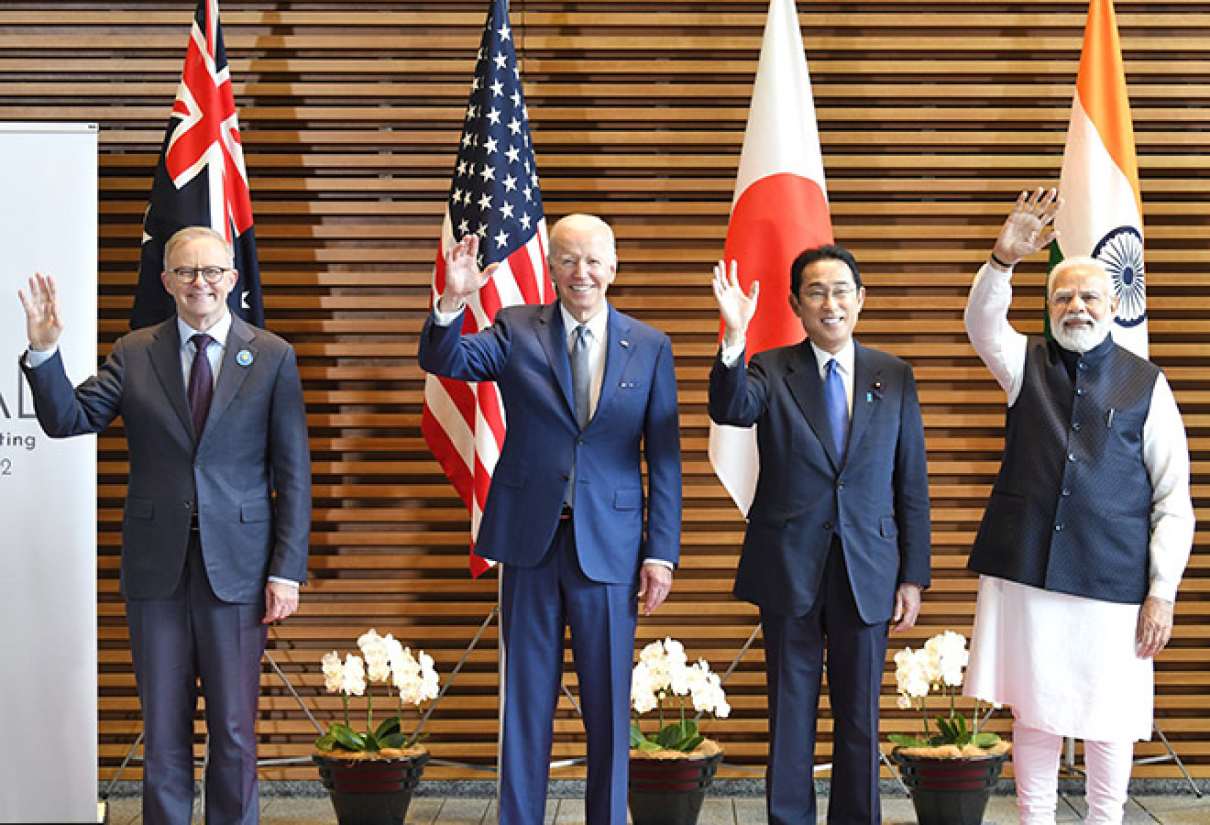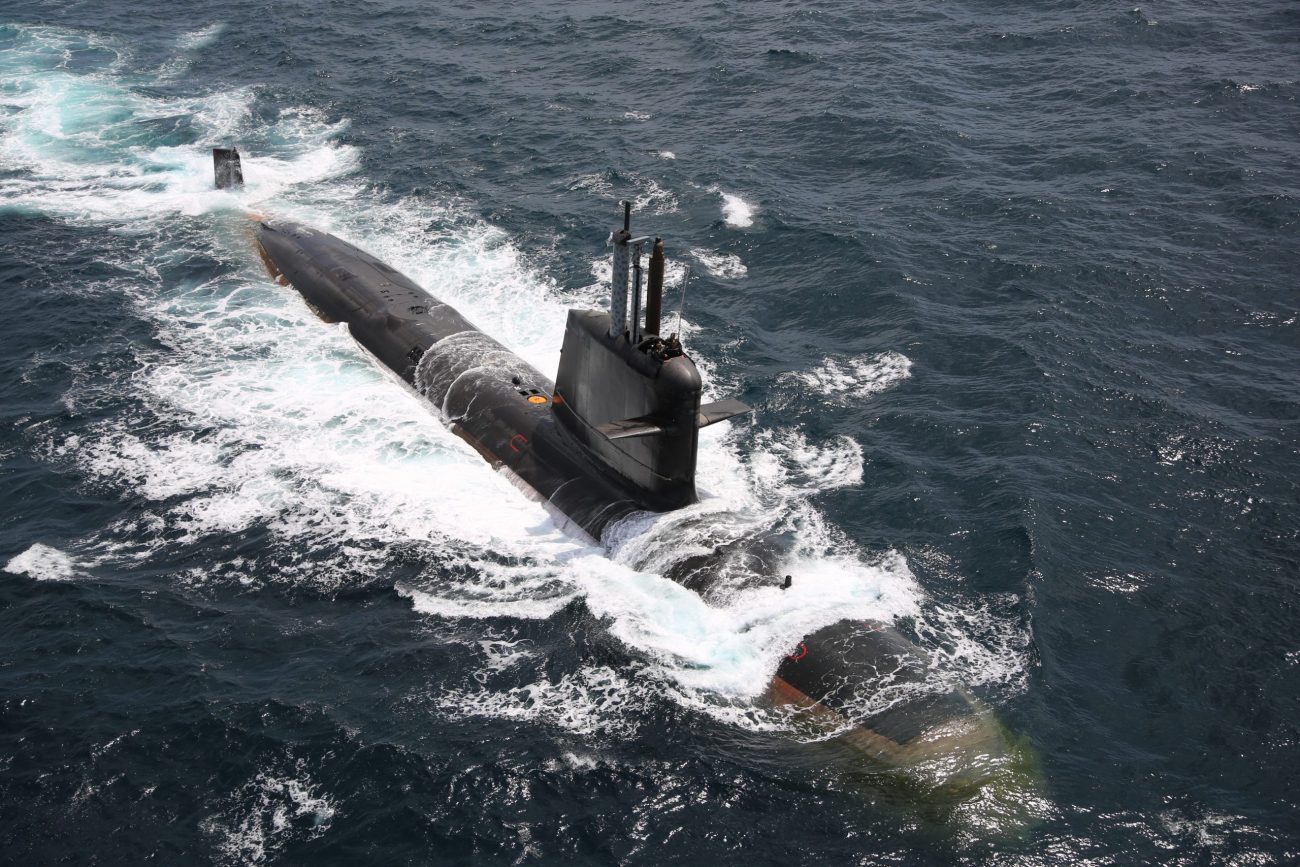Whatever the objectives of Quad-4, of which India is a member, it is not comfortable playing second fiddle. Quad-4, a sequel to the Indo-Pacific Economic Framework.
AUKUS, the adjunct to Quad-4, created unease in two of its members, Japan and India. France, not a member of the Quad–4, was angry about discriminatory policy regarding protecting democracy against the onslaughts of totalitarianism.
India wants to overcome the deficiency in its naval establishment. It would wish to convey a message to the US that as a vital link in the Quad–4 owing to its strategic location as the primary power status in the Indian Ocean Region (IOR), it would not lag in having a navy strong enough to play a key role in the security demands of the IOR.
Apart from this, India’s compulsion to tick its naval strength lies in extraordinary efforts underway in two of its adversarial neighbors to make their navies powerful and effective.
China’s increasing footprints in the Indian Ocean pose a challenge to India’s sphere of influence in the region and a security risk to India’s Exclusive Economic Zone (EEZ), as these deployments could spy on Indian naval facilities and vessels in the Bay of Bengal and the Arabian Sea.
Prakash Panneerselvan, assistant professor at the National Institute of Advanced Studies in Bengaluru, wrote: “The Indian Ocean is an attractive area of operations for the PLA-N, which, unlike the Western Pacific where the US and Japanese navies heavily patrol, is relatively safe for PLA-N submarines to operate.”

Moreover, he adds China’s naval base in Djibouti is facilitating those operations. The growing presence of China’s hydrographic and surveillance ships and underwater drones in the Indian Ocean may be mapping underwater features and passageways for future submarine operations there.
Pakistan & China: Dual Threat
Pakistan is significantly modernizing its submarine fleet so as not to be far behind India. Pakistan is not content with its military asymmetry with India. Apart from China, Turkey is also helping Pakistan build a strong navy.
In August 2021, Pakistan’s Center for International Strategic Studies published an article that said that historically Pakistan Navy had operated a smaller number of ships, submarines, and aircraft vis-à-vis the Indian Navy, with the latter having more resources, assets, and ambitions of controlling the Indian Ocean.
In line with this strategy, Pakistan ordered eight Hangor-class conventional submarines from China, the export variant of China’s 039A/041 Yuan Class AIP submarines equipped with Stirling engines, reported Naval News in December.
The report notes that four of the submarines are currently under construction at China’s Wuchang Shipbuilding Industry Group (WSIG) and that work on the first of the four submarines built in Pakistan by Karachi Shipyard & Engineering Works (KS&EW) began in December 2022, with the first four to be delivered in 2022-23 and the final four in 2028.
This shows that Indian Navy has to be strong enough to meet twin threats in the Indian Ocean. This being so, there is another compulsion that forces Indian policy planners to take the question of the security of the IOR very seriously.
In January 2022, The Times of India reported that one of India’s four Russian-made Kilo-class submarines was sent for refit to Russia, where it got stuck up owing to the Ukraine war. The plan is to sail to Norway, where a sea-lift vessel will bring it to India.
India Reducing Defense Dependence On Russia?
The same newspaper reported that India pushed to reduce its dependence on Russian military equipment. Russia has suffered heavy losses in a war against Ukraine, and its priority would be to refurnish the losses.
The paper said. “Concerns about the effectiveness of its Russian weapons due to heavy losses in Ukraine, the possibility that weapons orders may be redirected or delayed to replace battle losses, and sanctions on Russia’s arms industry are all factoring into India’s rethink about Russia’s viability as its primary weapon provider.”

The Print of January 30 reported that France and India had signed an agreement to cooperate on air-independent propulsion (AIP) technology to upgrade the latter’s Kalvari class submarines, deepening the growing strategic relationship between the two countries.
DRDO statement says that senior officials of DRDO New Materials Research Laboratory and Naval Group (of France) signed the agreement to extend cooperation for the detailed designed phase of integrating India’s indigenous AIP into the INS Kalvari with Naval Group certifying the integration.
Asia Times has reported France’s assistance to India’s 5th generation fighter. At the same time, India’s Kalvari class submarines are built under a 2005 technology transfer program with France.
While all these efforts of the Indian government align with its responsibilities in the security of the Indian Ocean Region, more needs to be done.
An article published by The Print in July 2022 reported that India needs help with its ambitious program to acquire 24 submarines by 2030, including its 18 conventional and six nuclear-powered submarines. India operates only 16 submarines, with one nuclear ballistic missile submarine and no AIP subs.
- KN Pandita (Padma Shri) is the former Director of the Center of Central Asian Studies at Kashmir University. Views expressed here are of the author’s.
- Mail EurAsian Times at etdesk(at)eurasiantimes.com
- Follow EurAsian Times on Google News




